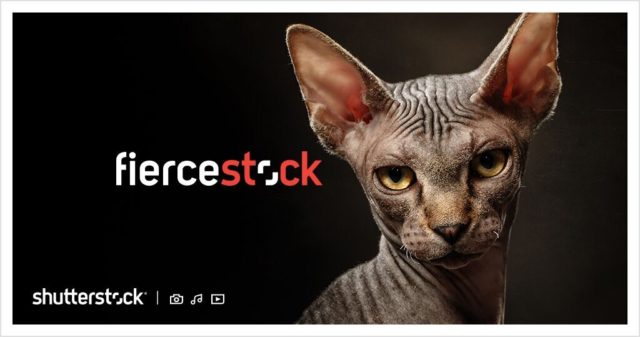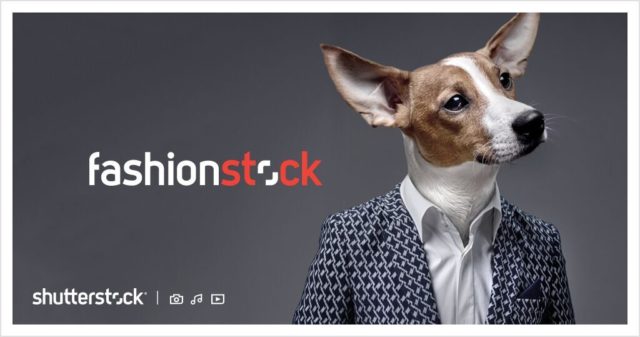This week in social media news, Instagram beats TV as the main platform to advertise to young people, YouTube will remove built-in Twitter and Google+ sharing options, Instagram will see its digital ad share double, Twitter will start streaming NBA games, Instagram will allow users to post to multiple accounts at once, Twitter is working on new publisher tools and Snapchat introduces end-to-end encryption to protect user privacy.
Move Over TV, Instagram Is The Top Way To Advertise To Young People
A study by Cowen, a financial firm, surveyed U.S. ad buyers and revealed they would pick Instagram over TV for new branding campaigns.
Why it matters: TV is losing its importance. The future is in social platforms.
Details: The financial firm surveyed 50 ad buyers to “to identify the primary platform they would use for a new branding campaign.” Business Insider reported that 61 percent of respondents targeting consumers ages 13 to 34 chose Instagram as the primary platform first, then YouTube/Google Video followed by Snapchat. For the demographic 35 and over, TV is still the choice platform for respondents to launch their new campaign.
YouTube Plans To Drop Twitter, Google+ Sharing Options
The major video sharing platform announced YouTube users will not be able to automatically share their content on Twitter and Google+ after January 31.
Why it matters: Users will need to find other ways to post automatically or do it manually.
Details: A Team YouTube employee wrote a post disclosing the removal and pushed the feature @mentions as a better way of social sharing.
Instagram Shows No Signs of Slowing Down
Facebook is struggling, but Instagram is its golden child. A study by Cowen—the same one that found Instagram is the main way to advertise to young demographics—also finds the photo-sharing platform’s ad share will double from 2018 to 2020.
Why it matters: Even though Facebook owns Instagram, consumers still see them as separate entities.
Details: Bloomberg reports Instagram’s “Stories” was a vital feature to make the app popular for campaigns. A representative from Cowen noted more ad buyers allocated some money to Instagram Stories last year compared to 2017.
Twitter Will Begin To Stream NBA Games
Twitter announced it signed a partnership with the NBA to stream parts of the game and they’ve come up with an innovative way to get viewers involved.
Why it matters: Sports personalities and news became a huge part of the Twitter ecosystem years ago. Companies like Twitter, Amazon and Yahoo continue to compete for these deals as we reinvent the way we stream TV and sports.
Details: To differentiate themselves from traditional channels like ESPN, Twitter is only streaming the second half of the games starting at the All-Start Game in February. Also, don’t expect to see the full court, the camera will only focus on a single player. During the first half, fans can vote at the @NBAonTNT Twitter account for the player they want the camera to follow.
https://twitter.com/TwitterMedia/status/1083121446149210112
Instagram’s ‘Self-Regram’ Allows Posting To Multiple Accounts
Instagram launches a new feature that lets users post to multiple accounts at the same time.
Why it matters: It’s a time saver, especially for high-volume brands and influencers.
Details: Instagram told TechCrunch the feature, called “self-regram,” will appear when a user is about to share a post. It will be in the same section where users can tag people and point location. The option will be labeled “Post to Other Accounts” to easily switch to another account. The feature will initially be available to iOS users, There is no word when it will roll out.
Twitter Works On New Publisher Tools
At CES 2019, Twitter announced its working on two new features—an events dashboard and activity tracker—to assist marketers.
Why it matters: The goal is to allow marketers to see who is interacting with their content on Twitter. Marketers will get topical information in real-time instead of after-the-fact.
Details: TechCrunch broke the news reporting Twitter is looking for more ways to monetize beyond traditional advertising. The events dashboard will show major events and breaking news in real-time and give insights. The new activity tracker brings the function in-house with access to direct data. There is no word when these features will roll out.
Snapchat Adds End-To-End Encryption to Secure Users
In an effort to prevent videos and photos from being seized by outsiders, Snapchat adds end-to-end encryption.
Why it matters: In a climate of constant data theft and fraud, it’s a move by Snapchat to protect user privacy.
Details: Snaps were originally unencrypted and would be stored on servers for around 30 days. Now, Snapchat’s content will be less vulnerable to hackers or security services. The Telegraph also reported this new encryption is only for snaps and not group chats or messaging.
Twitter Will Start Testing New Features To Promote ‘Healthy Conversation’
Twitter told Engadget at CES this week it’s going to start the beta program of its updated conversation features in order to get users to talk to one another.
Why it matters: The changes will not only switch-up Twitter visually, but how we use it.
Details: Twitter is experimenting with new features, one of them will indicate when users are online and it might include a current status setting under your username; another feature is the “icebreakers” a prewritten tweet in order to initiate conversation. Twitter has also dabbled with the idea to let users pin the icebreaker to the top of their profile. Another feature being tested is an easier way of responding to threads and individual people.
Snapchat Brings Joy To Users Study Finds
Snapchat commissioned Apposphere to study around 1,000 users between the ages of 14 and 44 to get more information on their emotions, which apps they use and how much time they spend on them.
Why it matters: Snapchat hasn’t been super successful retaining users, but new information that Snapchat makes users “happy” could boost their appeal to advertisers.
Details: Brand commissioned surveys should be analyzed with a healthy dose of suspicion, but according to Mashable this one is similar to other independent studies. Per the study, about 95 percent of users feel happy using Snapchat compared to other apps. It also emitted feelings of silliness and playfulness.
Samsung’s Facebook App Is Just A Placeholder
Samsung users received news from Bloomberg that they couldn’t permanently delete their Facebook app, but it turns out to be just a disabled shell.
Why it matters: People like the freedom to chose the apps they download on their phone and feeling like its been forced upon you isn’t good from a brand perspective.
Details: Bloomberg reported Samsung owners couldn’t uninstall the Facebook app from their phone, but thankfully you can. Reverse-engineer wizard Jane Manchun Wong clarified the pre-installed app isn’t active until you decide to update it. In fact, it’s just the Facebook app manager/installer.
Twitter Impacts Financial Markets
Finding Trump’s tweets cause declines in the stock of certain companies, Barron’s went further to examine how much Twitter affects global markets.
Why it matters: Twitter impacts the news and markets, more than traditional news outlets do.
Details: The study compared Twitter with traditional news outlets in how they impact the euro zone’s sovereign bond market. They analyzed the Greek debt crisis because of its global interest and tracked the word “Grexit” to examine Twitter’s power.
PGA Tour Renewed Deal With Twitter
The association announced it will stream via Twitter, offering around 140 hours of free viewing during the 2018-19 season.
Why it matters: PGA Tour’s chief media officer Rick Anderson said the partnership with Twitter has led to “extraordinary feedback” from fans. They also saw an increase in sponsor enthusiasm and buzz around the sport.
Details: The live coverage will feature 28 tournaments and additionally a ‘Fan Vote Fridays,’ where viewers can vote via Twitter on the two featured groups showcased on Friday coverage. Viewers can also get pre-tournament access from the driving range weekly.
Bloomberg Media Plans To Broaden TicToc
The one-year-old news brand has proved its success, getting over 500,000 followers and around 2.2 daily views.
Why it matters: Bloomberg Media has plans to expand TicToc to other platforms like dedicated apps and TVs. The news site geared at millennials wants to be the main news outlet for younger generations.
Details: At the start of 2019, Bloomberg is getting ready to launch TicToc’s video platform and the outlet will be aired on TV screens in major airports due to a new partnership with Reach TV.
Instagram Causes Anxiety Compared To Other Platforms
Psychology of Popular Media Culture found Instagram affects our mental health in a bad way and those who use it for work like Influencers can suffer the most.
Why it matters: The author of the study believes Instagram can confuse our social comparison radar because we naturally compare ourselves to gauge social standing. Influencers are on Instagram all day long and many of those interviewed for the study revealed they feel “tied to a static, inauthentic identity.” Keeping Instagram realistic helps to turn the negative feelings around to more positive ones.
Details: The research found it increases depression and anxiety in users when they spent too much time on it. Additionally, viewing a stranger’s profile causes more anxiety than ones of people you know.
Facebook Rejects GRIS Ad For Being ‘Sexually Suggestive’
Devolver Digital, game publishers of GRIS, don’t understand why an ad for the game’s trailer was rejected, being deemed “sexually suggestive.”
Why it matters: Facebook made the promise to crack down on inappropriate, hateful content, but it seems there is some overkill. A Devolver representative told Kotaku “This is stupid” and that their appeal was also rejected.
Details: The ad, featuring a statue of a woman crumbling, doesn’t seem sexual even for the most critical of puritans. See for yourself.
Facebook Users Leaving To Other Social Media Platforms
Facebook’s market share is falling, while other ones like Pinterest and Twitter grew. Last year, Facebook’s market share dropped from 76 percent to 66 percent globally.
Why it matters: According to Forbes, Facebook is still king of social media with about 30 percent of the world still actively using the platform. However, if something drastic doesn’t happen to help Facebook’s image, we might just be seeing its demise.
Details: Facebook is still far ahead from other social media platforms, but the scandals are definitely making an impact on their numbers. In June, they reached an all-time low market share of 63%. Last year, YouTube’s market share grew 4.8 percent, Twitter rose 8.2 percent and Pinterest grew its market share the most by 16.3 percent.
Instagram Is Full Of Fake Influencers
Authenticity is a big priority in marketing, but some brands are paying out over $200 million on phony Instagram influencers.
Why it matters: As the primary influencing platform, Instagram’s strength lies in its focus on ecommerce. But, some influencers are buying fabricated followers in order to charge more for their product reviews. Neither marketers nor consumers like to be swindled by these influencers toting fake comments. Vetting should continue to get stricter as brands look to combat fraud.
Details: A report released by Captiv8 revealed about 11 percent of reactions on influencer channels are fake. The company believes this shows how the system isn’t perfect when spotting out real and automated engagement. Recently, Instagram and Facebook tasked themselves with removing millions of fraudulent accounts.
Editor’s Note: Our weekly social media news post is updated daily. This installment will be updated until Friday, January 11. Have a news tip? We’re looking for changes to and news surrounding social media platforms as they relate to marketing. Let us know at editorial@alistdaily.com.


